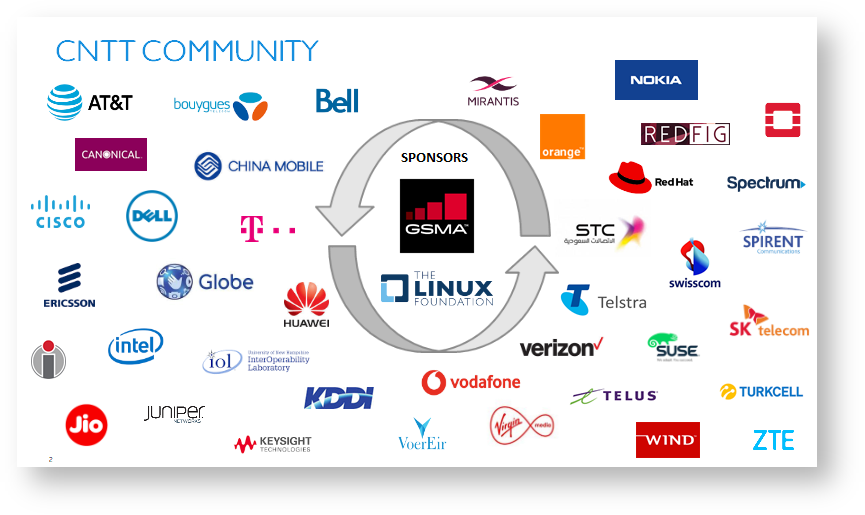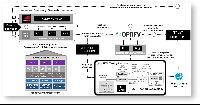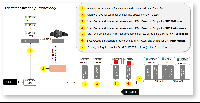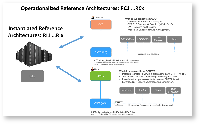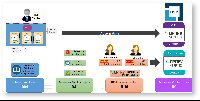Introduction
Who we are....
CNTT Participant On-boarding Overview
Getting Started | Information Packet | Automatic Agreement to Terms | Join Community | Engage! |
FAQs
| Information Packet CNTT Overview Legal Terms & Conditions How To's Distribution Lists, Meeting Info, Events Tools |
Legal Terms & Conditions | CNTT Workstream Lead Sends Confirmation of Registration Assign Mentor | Support & Administration |
Getting Started
Welcome to the CNTT Community!!
The following information is provided in this packet to help you get on boarded to CNTT as a contributing member.
- An overview of CNTT
- Legal Terms and Conditions
- How to get engaged and begin contributing (what to do, who to contact, when to meet, tools, etc.)
On-Boarding FAQs
How long will it take to review the info packet?
The basic on-boarding info packet review will take approximately 1 hours of your time, initially. After that, your consistent engagement and contributions are based on your own commitment.
What will I learn about during on-boarding process?
You’ll get an overview of the scope of CNTT and the underlying technologies, solutions, development status and roadmaps. Additionally, you’ll be made aware of participant responsibilities and legal obligations. Finally, you’ll be provided with support and logistical information you’ll need to get fully engaged with the CNTT developer community.
What help will I get throughout the on-boarding process?
On-boarding members are welcomed to reach out for assistance from those indicated on your "CNTT - Getting Started" email any time during the on-boarding process.
What happens once I get on-boarded?
Once you have reviewed the CNTT on-boarding information and have agreed to the perquisite terms and agreements associated with participating and contributing to the Task Force, and you have completed on-boarding and now it will be your opportunity to join desired work streams.
Information Packet
CNTT Objectives
Global operators and suppliers are joining forces to:
Reduce fragmentation of the NFVI architectures in use by Telco’s in order to accelerate innovation, time to market, & lower VNF | CNF on-boarding costs
Develop an NFVI Reference Model as a framework to enable the delivery of VNFs | CNFs for next generation cloud native services
Define a simplified & finite set NFVI Reference Architectures for VNFs | CNFs based on a common Reference Model
Establish an implementation & verification ecosystem for VNFs | CNFs as it relates to NFVI, leveraging the Linux Foundation Verification Programs
Common NFVI Lifecycle Framework
CNTT Characteristics
Scope
- Define an NFVI Reference Model and a finite set of NFVI Reference Architectures based on the Reference Model.
- Establish an VNF | CNF implementation & verification ecosystem
- Leverage Linux Foundation Verification and Open Source Projects
Key Attributes
- Fully open-sourced structure, approach, and solutions
- Governance & Technology workstreams
- Close coordination and collaboration with LFN, OPNFV, OVP, CNCF, and other open-source organizations such as Kubernetes and OSF
- Continuous improvement and lifecycle management
Benefits
- Enables of delivery of VNFs | CNFs to market efficiently and effectively.
- Lowers VNF | CNF on-boarding costs
- Accelerates innovation and time to market of next-generation cloud-native services.
Metrics (Examples)
- Content contributions by Company
- Content contributions by Individual
- # of Labs
- # of Badges Issued
- # of SP Adoptions
The Five Key Components (Value Streams) of the Common NFVI Framework
Global NFVI Lifecycle Framework
Establish an open-sourced end-to-end ecosystem to deliver, maintain & continually improve the cloud infrastructure delivery lifecycle
Reference Model (RM)
Develop a framework to drive continuity of Reference Architectures for NFVI
Reference Architectures (e.g. RA1, RA2, etc.)
Design number of discrete NFVI specifications based on the Reference Model
Reference Implementations (e.g. RI1, RI2, etc.)
Implement & deploy based on the design & configurations of each Reference Architecture
Reference Conformance (e.g. RC1, RC2, etc.)
Deliver community verified NFVI | VNFs | CNFs to the Service Provider Marketplace
Reference Model & Reference Architectures
To understand the work being done to lead the industry to adopt Common NFVI standard Reference Model and Reference Architectures, one needs to first understand the two core tenets underlying all efforts to develop the Reference Model and Reference Architectures. That is…
- VNF abstraction as a goal requires the VNF to not be particularly dependent on NFVI.
- The realization of value delivered into the VNF supply chain is dependent upon the ability of the CNTT community to coalesce on a Common Reference Model and discrete number of Reference Architectures.
Therefore, the entire CNTT approach is rooted in and built upon these tenets as core beliefs.
Reference Implementations
Reference Conformance
References (Rx) & Expected Outcomes
Automatic Agreement to Terms
“…CNTT is open to participation by any individual or organization that agrees to comply with these ToR(each such participant, a “Participant”)…Only individuals that are self-employed may participate as a Participant (in the case of an employed individual, their employer will need to agree to be a Participant)…”
– CNTT Terms of Reference
Legal Terms and Conditions CNTT Participants need to abide by:
Linux Foundation Networking (LFN)
GSMA
Join Community
The following links include all the contacts and information you’ll need to signup for workstreams, email distribution lists, find and schedule meetings, register for events, and use the CNTT tools for community engagement.
- CNTT LF Networking Wiki Page (Confluence)
- CNTT Technology Specifications Main Page (GitHub)
- CNTT Organizational Structure
- CNTT Meeting Schedules(with Zoom Conference Bridge Links)
- CNTT Workstream Signups
- CNTT Quick Reference info doc
- GitHub – Tutorial
- Main CNTT Governance Group Email list cntt-gov@lists.opnfv.org (please do not hesitate to use)
Here is a recommended checklist of items participants should have completed to join the community.
- Review (this) CNTT Information Packet
- Review all legal policy and terms (See Slide 15)
- Signup for an LFN ID
- Signup for a GitHub ID (then email Rabi Abdel your Github ID)
- Signup for workstream participation
- Schedule to attend workstream(s), Governance Steering, and or Technology Steering meeting(s)
Start engaging!
Engage!
Thanks for engaging with CNTT. For further support and ongoing engagement information, you may reach out to the following folks for further administrative help any time:
Jim Baker, jbaker@linuxfoundation.org
Jonathan Beltran, jonathan.beltran@att.com
Scot Steele, scot.steele@att.com
